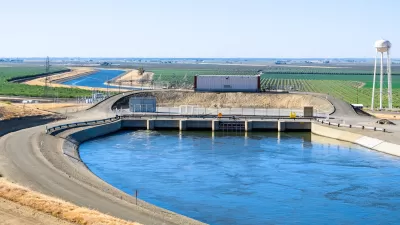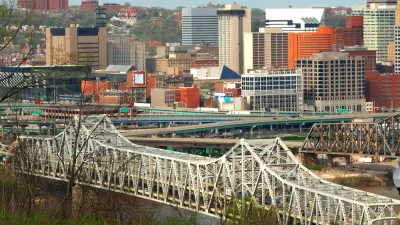The ability of the federal government to fund, and define, infrastructure, owes itself to a history of state and federal leadership at the dawn of the nation's existence.

Writing for The Washington Post, Susan Nagel tells the history of the intense rivalries between political leaders in New York (namely Philip Schuyler) and Virginia (namely George Washington) to control waterborne traffic from the Atlantic to the interior of North America.
The challenges of determining the scope of federal power to fund and build infrastructure, and what kinds of projects fell under that power, originates to Article I, Section 8 of the Constitution, which "endowed Congress with the right to provide for national defense and regulate interstate commerce. But, explains, Nagel, "it did not grant Congress the explicit authority to fund what was then known as 'interior improvements' — or what today is called infrastructure."
Thus, the answers to questions of 1) what constituted infrastructure, 2) who was responsible for it, and 3) what role the federal government should play in developing fell politicians like George Washington, Thomas Jefferson, Alexander Hamilton, James Madison, and James Monroe.
Hanging in the balance back then was the funding of the Erie Canal, the location of Washington, D.C., and the navigability of the Potomac River hung in the balance. In the contemporary United States, the role of the federal government in funding and building infrastructure—and the definition of infrastructure—is again up for debate.
FULL STORY: A conflict among the Founders is still shaping infrastructure debates in 2021

Alabama: Trump Terminates Settlements for Black Communities Harmed By Raw Sewage
Trump deemed the landmark civil rights agreement “illegal DEI and environmental justice policy.”

Planetizen Federal Action Tracker
A weekly monitor of how Trump’s orders and actions are impacting planners and planning in America.

The 120 Year Old Tiny Home Villages That Sheltered San Francisco’s Earthquake Refugees
More than a century ago, San Francisco mobilized to house thousands of residents displaced by the 1906 earthquake. Could their strategy offer a model for the present?

In Both Crashes and Crime, Public Transportation is Far Safer than Driving
Contrary to popular assumptions, public transportation has far lower crash and crime rates than automobile travel. For safer communities, improve and encourage transit travel.

Report: Zoning Reforms Should Complement Nashville’s Ambitious Transit Plan
Without reform, restrictive zoning codes will limit the impact of the city’s planned transit expansion and could exclude some of the residents who depend on transit the most.

Judge Orders Release of Frozen IRA, IIJA Funding
The decision is a victory for environmental groups who charged that freezing funds for critical infrastructure and disaster response programs caused “real and irreparable harm” to communities.
Urban Design for Planners 1: Software Tools
This six-course series explores essential urban design concepts using open source software and equips planners with the tools they need to participate fully in the urban design process.
Planning for Universal Design
Learn the tools for implementing Universal Design in planning regulations.
Clanton & Associates, Inc.
Jessamine County Fiscal Court
Institute for Housing and Urban Development Studies (IHS)
City of Grandview
Harvard GSD Executive Education
Toledo-Lucas County Plan Commissions
Salt Lake City
NYU Wagner Graduate School of Public Service





























